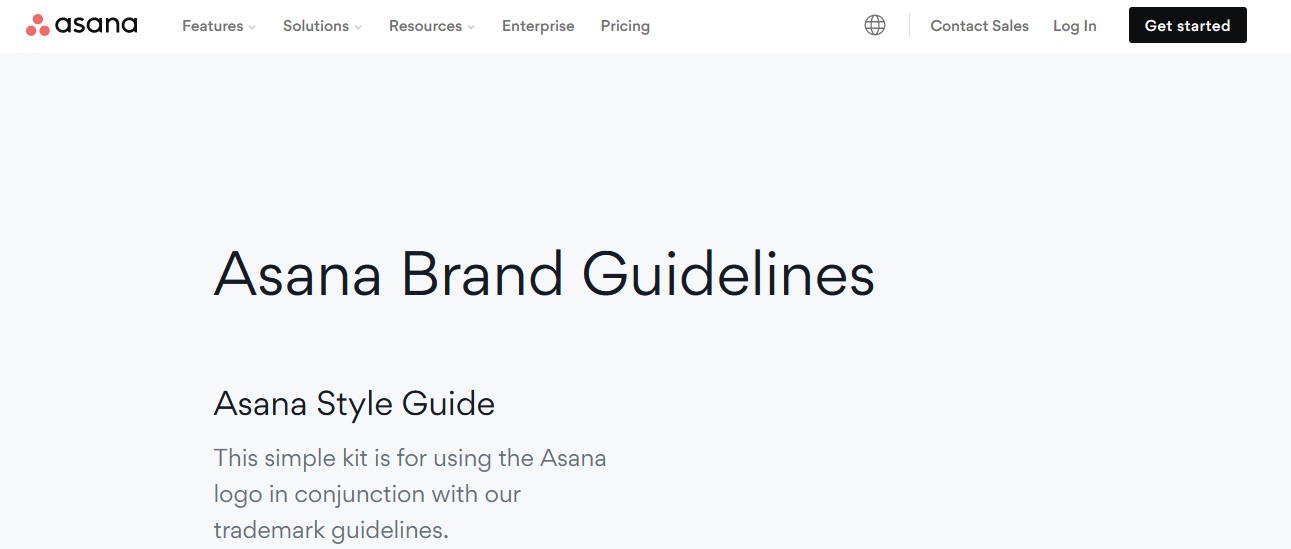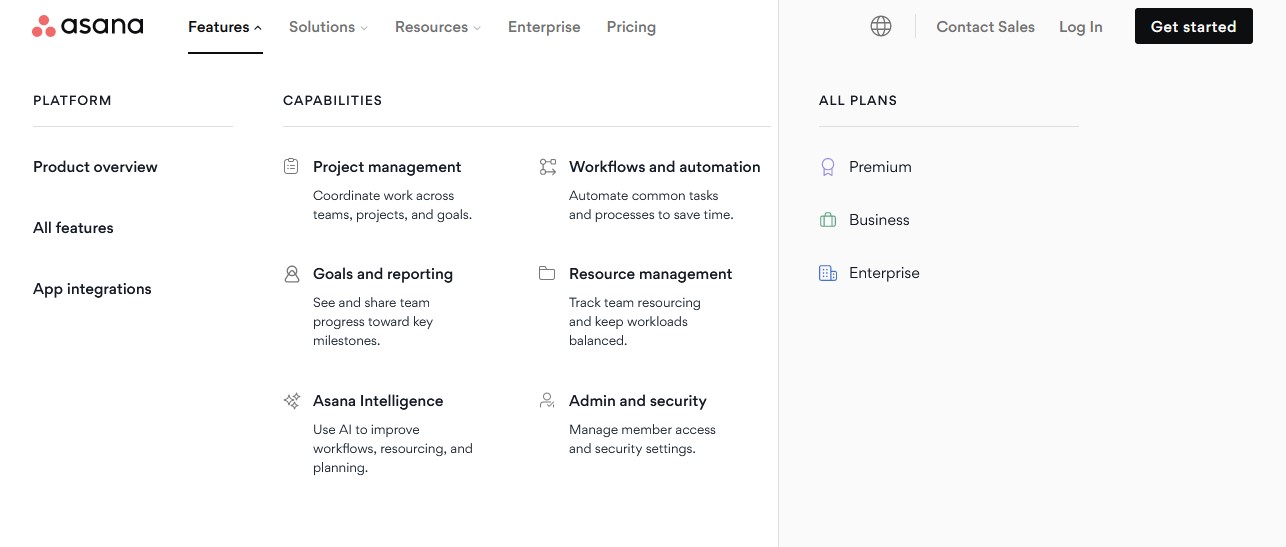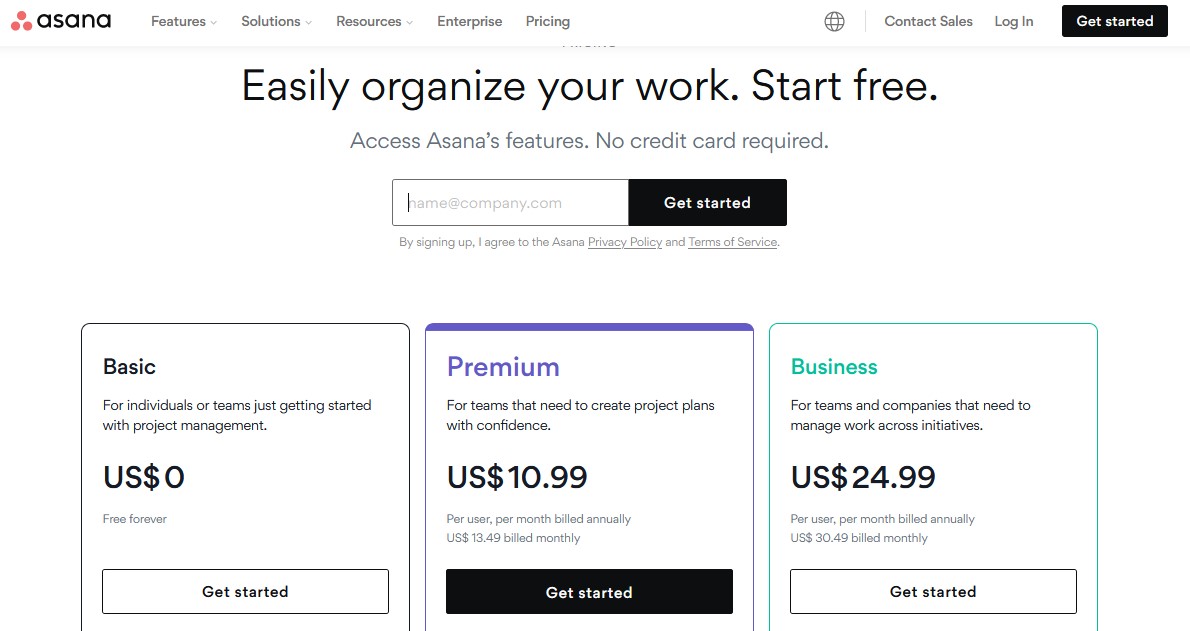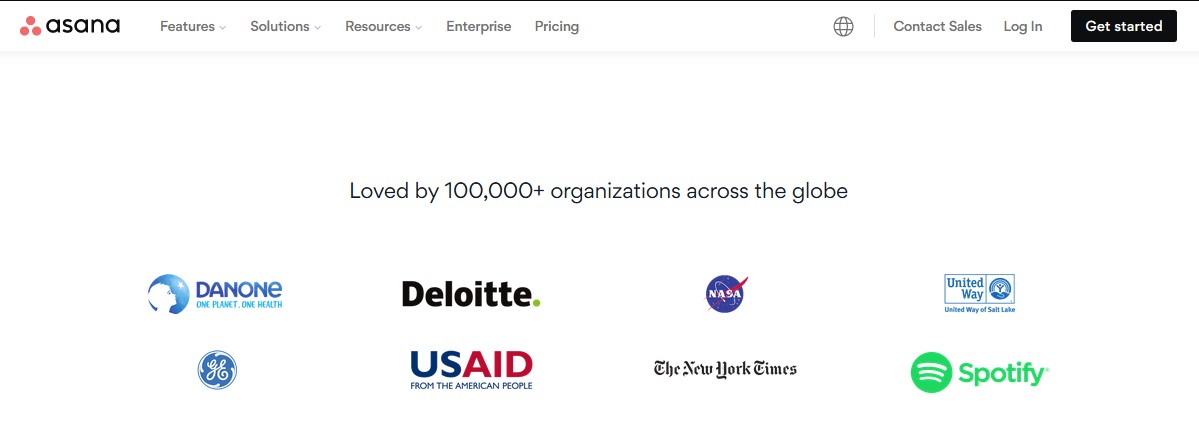Are you tired of managing your projects and tasks manually? Looking for a powerful project management tool to streamline your workflow? Look no further than Asana! In this article, we will explore the pricing, features, reviews and alternatives of this popular project management software. Whether you’re a small business owner or a team leader in a large corporation, Asana offers an array of tools to help you stay organized and boost productivity. So, let’s dive in and discover how Asana can revolutionize the way you work!
Are you struggling to keep track of all the moving parts in your projects? Wish there was a magic wand that could simplify your task management woes? Well, consider Asana as your very own digital assistant! In this comprehensive article, we’ll delve into the world of Asana – from its pricing plans to its robust features, from user reviews to alternative options. Get ready to unlock the full potential of project management with Asana and say goodbye to chaos once and for all. Let’s get started on this exciting journey towards efficient collaboration!
Understanding the importance of project management tools
Project management tools are essential for any organization or team that wants to effectively plan, execute, and monitor their projects. These tools provide a centralized platform where all project-related information can be stored and accessed by team members, making collaboration and communication much easier. They also help in organizing tasks, setting deadlines, assigning responsibilities, and tracking progress, ensuring that projects stay on track and are completed within the given timeframe.
Additionally, project management tools offer features like Gantt charts, task dependencies, and resource allocation, which allow teams to visualize the project timeline, identify potential bottlenecks or conflicts in tasks, and optimize resource utilization. This helps in improving efficiency and productivity by enabling teams to make informed decisions regarding task prioritization and resource allocation. Moreover, these tools often come with reporting capabilities that generate insights on project performance metrics such as budget utilization, task completion rates, and team workload distribution. This data can be used to evaluate the success of projects and identify areas for improvement in future endeavors.
In summary, project management tools play a crucial role in streamlining project workflows, enhancing collaboration among team members, optimizing resource allocation, and monitoring project progress. By utilizing these tools effectively, organizations can improve their overall project performance and achieve better outcomes.
Asana Pricing: Different pricing plans offered by Asana
Asana offers a range of pricing plans to cater to different needs and budgets. They have a free plan that is suitable for small teams or individuals who want to try out the platform. This plan includes basic features such as task management, project boards, and file attachments.
For those looking for more advanced features and functionality, Asana offers premium plans starting at $10.99 per user per month when billed annually. The premium plans include additional features such as timeline view, custom fields, and advanced reporting capabilities.
In addition to the premium plans, Asana also offers an enterprise plan for larger organizations with more complex needs. The pricing for this plan is customizable based on the specific requirements of the organization. Overall, Asana provides flexible pricing options that allow users to choose the plan that best fits their needs and budget.
Features: Highlighting key features of Asana
Asana is a powerful project management tool that offers a wide range of features to help teams stay organized and collaborate effectively. One key feature of Asana is its task management system, which allows users to create and assign tasks, set due dates, and track progress. This helps teams prioritize their work and ensures that everyone knows what needs to be done.
Another notable feature of Asana is its communication tools. Users can leave comments on tasks, tag team members, and have discussions within the platform. This eliminates the need for lengthy email threads and keeps all relevant information in one place.
Additionally, Asana offers integration with other popular apps and services such as Google Drive, Slack, and Dropbox. This makes it easy for teams to access and share files, communicate across different platforms, and streamline their workflow.
Overall, Asana’s key features make it a valuable tool for project management by providing task management capabilities, efficient communication tools, and seamless integration with other apps.
Reviews: User opinions and feedback on Asana
Asana is a highly popular project management tool that has received positive reviews from users across various industries. Many users appreciate its user-friendly interface and intuitive design, which make it easy to navigate and use. The ability to create tasks, assign them to team members, set deadlines, and track progress in real-time has been praised as a valuable feature for improving productivity and collaboration within teams.
Additionally, Asana offers a wide range of integrations with other tools such as Google Drive, Slack, and Microsoft Teams, allowing for seamless workflow management. Users have also highlighted the powerful search functionality of Asana, which enables quick access to specific tasks or projects. Overall, Asana has garnered positive feedback for its effectiveness in streamlining project management processes and enhancing team communication.
Alternatives: Exploring other project management tool options
There are several project management tool alternatives to Asana that you can consider. One popular option is Trello, which offers a simple and visual way to manage projects. It uses boards, lists, and cards to help you organize and prioritize tasks. Trello also integrates with various other apps and platforms, making it easy to collaborate with team members.
Another alternative worth exploring is Monday.com. This tool provides a customizable and intuitive interface for project management. It allows you to create workflows, track progress, and assign tasks to team members. Monday.com also offers integrations with popular tools like Slack and Google Drive, enhancing collaboration capabilities.
Ultimately, the best alternative for you will depend on your specific needs and preferences. It’s important to consider factors such as ease of use, features offered, pricing plans, and integration options when evaluating different project management tools.
Overview of Asana and its key features
Asana is a web and mobile application designed to help teams track their work and manage projects more efficiently. It offers a range of key features that make it a popular choice for task management and collaboration.
One of the key features of Asana is its ability to create and assign tasks. Users can easily create new tasks, set due dates, assign them to team members, and track their progress. This helps teams stay organized and ensures that everyone knows what they need to do.
Another important feature of Asana is its project management capabilities. Users can create projects, add tasks to them, set deadlines, and track the overall progress of the project. This allows teams to have a clear overview of all their ongoing projects and helps them prioritize tasks accordingly.
Additionally, Asana offers features such as file attachments, comments, and notifications, which facilitate collaboration and communication within teams. Users can attach files directly to tasks, leave comments on specific tasks or projects, and receive notifications when there are updates or changes made by other team members.
Overall, Asana provides a comprehensive platform for task management and project collaboration. Its key features make it easy for teams to stay organized, track progress, communicate effectively, and ultimately improve productivity.
Pricing: Different pricing plans and options
Asana offers a variety of pricing plans and options to cater to different needs and budgets. They have a free plan, which is great for individuals or small teams who are just starting out or have limited requirements. This plan includes basic features such as task management, project boards, and basic integrations.
For more advanced features and capabilities, Asana offers premium plans. The Premium plan is priced at $10.99 per user per month when billed annually and includes additional features such as timeline view, custom fields, advanced search filters, and priority support.
Additionally, there is an Enterprise plan available for larger organizations with more complex needs. This plan offers even more advanced features like data export and deletion, SAML-based single sign-on (SSO), custom branding, and dedicated customer success support. The pricing for the Enterprise plan is available upon request.
Overall, Asana provides flexible pricing options that allow users to choose the plan that best suits their individual or organizational requirements. Whether you’re a solo entrepreneur or part of a large team, Asana has a pricing option that can meet your needs while providing access to powerful project management tools.
Features: In-depth look at Asana’s key features
Asana is a powerful project management tool that offers a wide range of features to help teams stay organized and collaborate effectively. One key feature of Asana is its task management capabilities. Users can create tasks, assign them to team members, set due dates, and track progress all in one place. This makes it easy to keep track of what needs to be done and ensure that everyone is on the same page.
Another important feature of Asana is its ability to facilitate communication and collaboration among team members. Users can comment on tasks, tag colleagues, and have discussions within the platform. This eliminates the need for long email threads or multiple communication channels, streamlining communication and making it easier for everyone to stay informed.
Additionally, Asana offers advanced features such as custom fields, dependencies, and timelines that allow users to customize their workflows and visualize project timelines. These features provide greater flexibility and visibility into project progress, helping teams stay on track and meet their goals more efficiently.
Overall, Asana’s key features make it a valuable tool for any team looking to improve organization, collaboration, and productivity in their projects.
Reviews: User reviews and testimonials of Asana
Asana has received overwhelmingly positive reviews from users. Many appreciate its user-friendly interface and intuitive design, which makes it easy to navigate and use. Users also praise the platform’s robust features, such as task management, project tracking, and collaboration tools.
One of the main benefits highlighted by users is Asana’s ability to streamline communication and improve team collaboration. With features like real-time updates, file sharing, and comment threads, teams can easily stay connected and work together efficiently. Additionally, users appreciate the flexibility of Asana, as it can be customized to fit their specific workflow and project needs.
Overall, Asana has garnered a reputation for being a reliable and effective project management tool that helps teams stay organized, improve productivity, and meet deadlines. Its positive user reviews serve as a testament to its value in enhancing team collaboration and simplifying project management processes.
Alternatives: Other project management tools to consider
There are several project management tools that you can consider as alternatives to Asana. One popular option is Trello, which uses a visual board system to help you organize and track your projects. It allows you to create cards for each task and move them across different columns to indicate their progress.
Another alternative is Monday.com, which offers a more customizable approach to project management. It allows you to create custom workflows and automations, making it easier to streamline your processes and collaborate with your team.
If you’re looking for a tool specifically designed for agile project management, Jira might be the right choice for you. It offers features such as sprint planning, backlog management, and issue tracking, making it ideal for software development teams.
Ultimately, the best alternative to Asana will depend on your specific needs and preferences. It’s worth trying out a few different options to see which one works best for you and your team.
Conclusion
In conclusion, Asana is a powerful project management tool that offers a wide range of features to help teams stay organized and efficient. With its user-friendly interface and robust collaboration tools, Asana can greatly improve productivity and communication within any organization.
However, it’s important to consider alternatives to Asana that may better suit the unique needs of your team. Trello, for example, offers a more visual approach to project management with its drag-and-drop interface, while Basecamp focuses more on simplicity and ease-of-use. By exploring different options and evaluating the specific requirements of your team, you can find the right project management tool that will truly enhance your workflow.
Ultimately, no matter which tool you choose, it’s crucial to remember that effective project management goes beyond just software. It requires clear goals, open communication channels, and a strong team dynamic. With the right combination of technology and teamwork, you can ensure successful project execution and achieve your desired outcomes. So take advantage of the features offered by tools like Asana or explore other alternatives – but always keep in mind that the success of your projects ultimately lies in the hands of your team.



